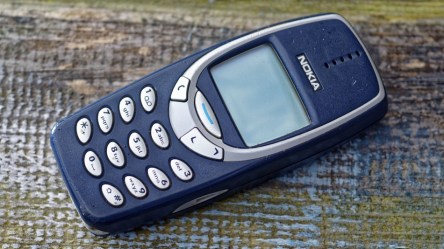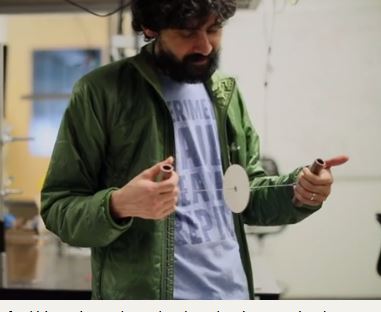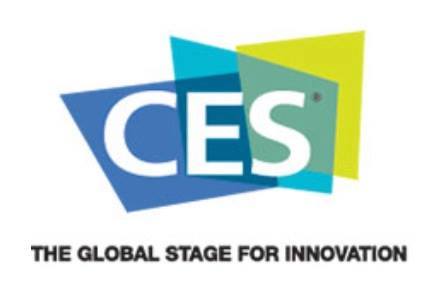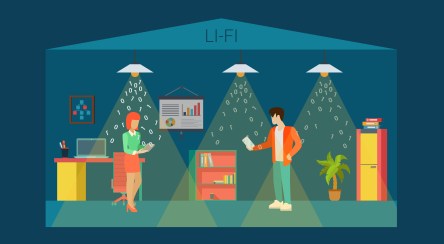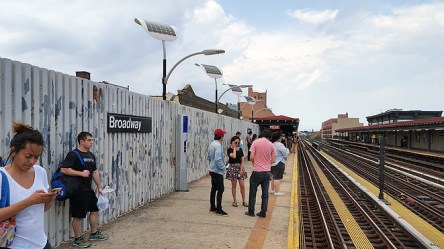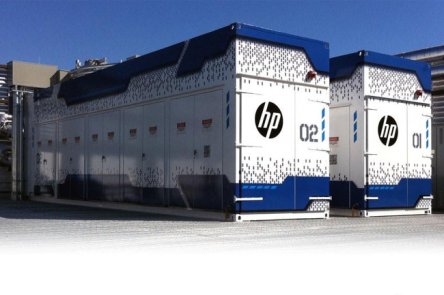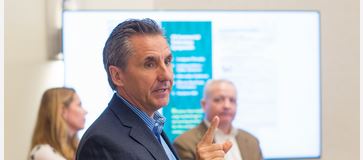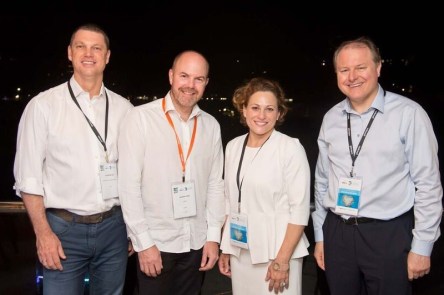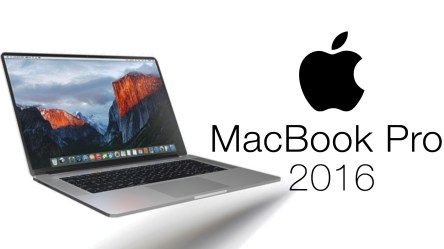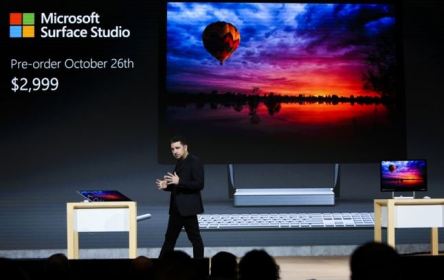Once found only in science fiction, self-driving cars are about to show up on a street near you. Goldman Sachs estimates that the market for advanced driver assistance and autonomous vehicles is expected to grow from roughly $3 billion in 2015 to $96 billion in 2025 and balloon to $290 billion in 2035. When two giants meet and start planning together, the world expects great things. One such collaboration, between Daimler — the world’s largest maker of premium cars, and Bosch — the world’s largest automotive supplier, is poised to bring a major change to the auto industry. The two companies are teaming up to develop self-driving cars and speed up the normalization of “robo-taxis.” The fully automated vehicle is planned to be ready for use in urban markets in the early 2020s, the companies say. The autonomous driving system will be designed for city driving. The expectation is that self-driving taxis will improve traffic flows in cities and road safety. The development alliance is on a mission to create a system for fully automated Level 4 and driverless Level 5 vehicles. The Society of Automotive Engineers has defined five levels of driving automation: Level 4 means the car assumes all of the driving in many conditions — it could drive fully autonomously in specific geographic locations, such as a certain route in a city center, or in certain weather conditions. Level 5 is reached when the vehicle can operate in all conditions, without requiring any human intervention at any time. Daimler, through its passenger car brand Mercedes-Benz, has been working on autonomous vehicles for years. At the same time, the company keeps a close eye on the growing group of people who would rather use public transportation and car-sharing than own a car....
Electric Planes
Flying our way?
Electricity powers motorcycles, cars and boats, but how about planes? In recent years, research has been dedicated applying such technology to the aviation industry. Even though the price of oil per barrel has dropped lately, we still pay a hefty price for carbon-based fuels, and our planet absorbs ever-increasing levels of pollution. In 2011, the e-Genius, a two-seater aircraft built by the engineers at the University of Stuttgart, climbed more than 20,000 feet in under two minutes and reached speeds of 142 miles per hour. It flew uninterrupted for 300 miles. The aircraft burned no fuel and has zero emissions, because it was equipped with an all-electric motor powered by a single battery. Another fantastic component was the cost: during a 62-mile stretch of its historic flight, the plane used about 25 kilowatts of electricity for a total energy cost of just over $3. NASA has been investing heavily in electric planes, too—the agency has been focusing on designing and building the X-Series, a line of environmentally-friendly airplanes. Test pilots and engineers at NASA’s Armstrong Flight Research Center in Edwards, Calif. are “flying” a simulator designed to mirror exactly the specifications of the X-57 Maxwell, which will be NASA’s first piloted X-plane in two decades. The X-57 will be the first NASA X-plane to feature a fully distributed electric propulsion system, which researchers will use to demonstrate an increase in cruise energy efficiency, as well as reductions in carbon emission and aircraft noise. That is expected in early 2018. NASA isn’t the only one interested in the Tesla of the skies. Wright Electric, a U.S. startup, announced on their blog the “Wright One,” an electric 150-seater concept that runs on batteries and can handle flights under 300 miles. These short trips make up to...
Resurrected
Nokia 3310 Makes a Comeback
Mobile World Congress is in full swing in Barcelona this week. Strangely enough, the most popular device is far from being the smartest or most innovative, instead it is all about nostalgia. Yes, Nokia 3310 holds the spotlight once more, 17 years after its original release. If I asked you to close your eyes and remember your first cellphone, a midnight blue and grey device might pop up in front of your eyes. Chances are you’re picturing a Nokia 3310, a device originally presented to the world in September 2000. Obviously, the model presented at MWC is a remake, but not much was really redone. The dumbphone is limited to 2G connectivity for calling and texting, has FM radio and MP3 player for music, 16MB storage (yes, megabytes, this is no typo) expandable up to 32GB through a MicroSD card slot, new UI with plenty nods to the original model and that massive battery life coming from a removable 1,200mAh battery. More precisely, it offers up to 22 hours talk time and up to a month of standby time, 10 times the original’s capabilities. And how can one spend all that juice? Playing Gameloft’s updated version of the original Snake game, of course! Its design is also pretty similar to the Nokia 3310 launched at the millennium. They’re roughly the same size, but the new one has a 2MP camera with flash and a bigger display—a 2.4-inch QVGA with a resolution of 240×320 pixels. The 2017 model has slimmed down over the last 17 years, just like most models. In case you’re wondering what operating system keeps it going, it’s Nokia Series 30+. The new model boasts more rounded edges, subtler buttons—eye-candy for the retro phone fans. And it sells for just $52. The...
Our Greatest Hits
Yardi Blog Celebrates 5 Years
Happy birthday to us! Though it seems like just yesterday when we were brainstorming ideas for our first blog posts, The Balance Sheet celebrated its fifth birthday this month. Time flies when you’re creating great content. It is a great joy to be able to produce interesting real estate related posts for you week after week. In five years, we’ve published more than 1,400 articles by more than 50 contributors, touching every section of the real estate world – from people living in some of its tiniest apartments to the company supplying technology for property managers worldwide. Of course, we’re talking about Yardi, the inspiring homegrown company that powers this blog and much of the North American real estate rental market. We’re proud to tell the stories of the clients and employees who make up the broad and diverse Yardi universe. Take a quick trip down memory lane with us as we revisit some of the all time most popular posts on the Yardi corporate blog. Easy Yardi Training When our eLearning product launched in 2013, it quickly became popular with clients. Senior writer Joel Nelson spoke with Yardi client Simpson Housing to learn how the new platform revolutionized training on Yardi’s software offerings and much more. Four years later, eLearning is more robust than ever and offering even more advanced functionality. 5000 Strong Just last summer, Yardi marked a major milestone – hiring our 5000th employee! It was an exciting moment for the entire company and was celebrated at all of our offices around the world. We were excited to mark the occasion with a special blog post and incorporate photos from dozens of the office celebrations. Yardi Voyager 7S The much-anticipated launch of Yardi Voyager 7S was another milestone moment for Yardi....
Low-Tech Diagnostics
Frugal Science
For caregivers in economically depressed communities, even the simplest tests can be too expensive. But thanks to the Paperfuge, spinning biological samples for testing just got a whole lot more economical. The Paperfuge allows health care workers to perform important diagnostic tests in just a few minutes, all for less than a twenty-five cents. Understanding the need to provide low-cost, and low-tech, testing and diagnosis options to the developing world, Stanford Bioengineer Manu Prakash alighted on the idea of modifying a children’s toy into a cheap, functional centrifuge. It’s all a part of Prakash’s commitment to improving healthcare across the globe by pursuing the art of Frugal Science. “To me, Frugal Science is really designing with constraints in mind,” says Prakash in a video about the Paperfuge. “When we say ‘bringing tools the masses,’ we truly do mean the billions of people on the planet.” Low Energy, High Results Traditional centrifuges are bulky, expensive and require a robust energy supply, making them almost impossible to operate in far-flung reaches of the world. A StatSpin MP centrifuge, for example, can cost thousands of dollars and runs on electricity. For many economically challenged communities, standard medical equipment is too costly and resource intensive. Prakash and his team took on the challenge of making a more accessible – and affordable – version of this valuable diagnostic tool. “We told ourselves, we can design one, but it cannot require any electricity, and it needs to be light and portable – I need to be able to carry it in my pocket – and it needs to cost less than a dollar in parts.,” explains Prakash in the video. “By boxing ourselves in with constraints, we were able to think outside the box.” The Paperfuge fits all of those...
Stranger Danger
Cyber Security 2017
In many ways, 2016 will be known as the year of the hack. Between Russian Hackers, DDoS attacks bringing down the eastern seaboard, or the little matter of over a billion compromised Yahoo! Accounts, last year marked the moment “cyber” security went mainstream. While there’s no doubt more of the same is on the way, Wired has put on its prognostication cap to ponder what new security threats will emerge over the next 12 months. After all, as they say, forewarned is forearmed. “It’s hard to know for certain what lies ahead, but some themes began to present themselves toward the end of 2016 that will almost certainly continue well into next year,” begins Wired. “…the more we can anticipate them, the better we can prepare.” Dawn of the Drones Military drones have been fighting proxy battles across the globe for quite some time now, but private, commercial drones could soon turn deadly. Though they’re smaller than their battle-worn counterparts, commercial drones have existed in an unregulated, wild west-type no-man’s-land. Though the FCC currently requires drone owners to register their devices, internationally, there’s little oversight. Wired reports small drones have already been used for terrorist activities and guerrilla warfare, including an attack on US-allied Kurdish soldiers in October of last year. “What better way to deliver deadly ordnance across enemy lines or into secure zones of cities than with remote-controlled accuracy and off-the-shelf hardware that offers no easy way to trace the perpetrator,” Wired asks. “The US government is already buying drone-jamming hardware. But as with all IEDs, the arms race between flying consumer grade bombs and the defenses against them will likely be a violent game of cat-and-mouse. iPhone goes to Court Wired predicts the conflict between federal authorities and mobile-phone providers, which hit...
CES 2017
High Level Highlights
New year, new tech. Sin City begins 2017 in style, for a few days becoming the world’s greatest technology hub filled with innovations we didn’t know we needed. The automotive industry in particular is evolving at a fast pace. Trends in connectivity, fuel efficiency and social behavior drive its development. Manufacturers are also offering upgrades for everything from super-resistant windshields to autonomous driving. Corning Inc. premiered its newest Gorilla Glass, a windshield that is five times tougher and up to 60 percent lighter than conventional windshield laminates. The windshield provides real-time updates on traffic and landmarks while also enabling a lighter, more fuel-efficient ride. Ford is the first automaker to use Gorilla Glass in a production windshield. Its GT supercar model comes equipped with Gorilla Glass in the bulkhead and engine cover, cutting 12 pounds from the weight of the vehicle. Gorilla Glass Automotive can help automakers comply with rising standards: U.S. automobile fleets must reach 54.5 miles per gallon by 2025, while European Union fleets must achieve 57.6 miles per gallon by 2020. Microsoft executives publicized that they would focus their efforts on connecting vehicles to Microsoft’s cloud services. The company describes its new platform as “a set of services built on the Microsoft Azure cloud and designed to empower auto manufacturers to create custom connected driving experiences.” It is not an in-car operating system. Instead, it is a “living, agile platform that starts with the cloud as the foundation and aims to address five core scenarios that our partners have told us are key priorities: predictive maintenance, improved in-car productivity, advanced navigation, customer insights and help building autonomous driving capabilities.” Renault-Nissan confirmed its plans to use Microsoft cloud services for navigation, predictive maintenance and remote care monitoring. BMW announced its partnership with...
Blockchain Explained
For real estate and beyond
Imagine that it is the end of the month. It’s time to balance the books. Now, imagine that the entire process is gone from your schedule. Every transaction that your organization made that month was automatically balanced and recorded by an automated, accurate, secure and self-regulated system—completed within seconds. This is just the tip of the iceberg when it comes to the potential of blockchain in real estate. Today, most organizations maintain double-entry bookkeeping, a written record of invoices and payables. Those records are easily lost, manipulated, or remain unfulfilled. Blockchain does not possess such flaws. The Economist excellently describes blockchain construction and how the transactions occur anonymously, securely, and accurately. In gist, blockchain is a database that securely tracks bitcoin transactions. It relies on cryptographic technology to store completely paperless ledgers of transactions. Once a transaction occurs, it cannot be easily manipulated. The ledgers are self-enforcing and practically impregnable. Workflow efficiency effortlessly improves. Blockchain replaces third-party financial systems, such as banks, which tend to slow down transaction processing. The automated system decreases human error. The technology could replace double-entry bookkeeping. But that barely depicts the sophistication of the database. It has even greater potential and companies are exploring its vast applications. A recent Deloitte survey reveals just how many companies are investing in blockchain. The survey reflects the responses of 522 senior executives at companies with annual revenues exceeding $500 million. Of respondents, 12 percent were knowledgeable of blockchain and have projects in the works to capitalize on the technology. Of that group, 28 percent have invested more than $5 million into their projects. About 10 percent invested $10 million or more. An additional 25 percent of respondents reported project plans for 2017. Each company has earmarked approximately $5 million for those endeavors....
Rogue Routers
Smart Home Security
The smart home’s weakest link may be that unassuming router tucked neatly next to your modem. [Update: Netgear has released firmware updates for the affected products. Click here for more information.] While the breach of one billion Yahoo! Email accounts continues to dominate the new, another internet security crisis continues unabated. As Lily Hay Newman reports in Wired’s latest issue, Nighthawk line of Netgear routers can be remotely exploited, allowing third-parties to take control of the devices, leaving thousands of home networks open to hackers and “”havoc-wreaking botnets.” “While Netgear has finally released a tentative fix for some models,” writes Newman, “the delays and challenges in patching all of them help illustrate just how at risk the Internet of Things is—and how hard it is to patch up when things go wrong.” Hacking the Home Like many of the smart devices that make up the “Internet of Things,” routers seem as common – and as low-tech – as a toaster or thermostat. But as has already been noted, the ubiquitous nature of many of these ‘wired” versions of our beloved devices make them almost invisible; and for many smart home inhabitants, invisibility is a weakness. “If we want to put networked technologies into more and more things, we also have to find a way to make them safer,” Michael Walker, program manager and computer security expert for the Pentagon’s advanced research arm recently told the New York Times. “It’s a challenge for civilization.” Routers Gone Wrong Andrew Rollins, a security researcher with the handle Acew0rm, notified Netgear about the security flaw back in August but never heard back from the company. As months went by with no fix – presumably exposing thousands of users in the interim – Rollins eventually chose to go public....
Li-Fi
Emerging Technologies
Wi-Fi revolutionized the way we connect to the internet, but it’s not without flaws. Researchers have been busy looking for new kinds of technologies that could offer more reliable alternatives. One is called Li-Fi (Light Fidelity). Back in 2011, a group of scientists led by Professor Harald Haas from Edinburgh University in Scotland introduced the idea of “Wireless data from every light” during a TED Talk. The general term is visible light communication (VLC) and is similar to the Morse code; it dates back to the 1880s and includes any use of the visible light portion of the electromagnetic spectrum to transmit information. Li-Fi is a type of visible light communication system that runs completely on wireless communications by means of travelling at very fast speeds. Confusing or not, this emerging technology is projected to expand its market worth to $80 billion by 2021. So let me explain. Wi-Fi and Li-Fi are pretty similar—they both provide the same means of transmitting data electromagnetically; yet, Wi-Fi utilizes the usage of radio waves, while Li-Fi runs solely off of the visible light. Even though invisible to the naked eye, waves are transmitted from our devices, carrying bits of data that allow us to browse the internet. There is a constant communication with towers called cellular radio masts. According to the founder of Li-Fi, Harald Haas, there are approximately 1.4 million cellular radio masts worldwide. Li-Fi replaces this bulky infrastructure with a solution relying on LED lights that send data over visible light via pulses undetectable by the human eye. Moreover, on the electromagnetic spectrum the spectrum of visible light is 10,000 times as big as that of radio-waves, said Haas. Unlike Wi-Fi signals, which can penetrate walls, Li-Fi is based on light and can’t, so theoretically,...
360 Video
Iris Views Real Estate
Architecture is one of the great powers to enhance our lives, but it boasts some serious communication issues. Designers, even though they mean well, may present homeowners with tough to understand drawings, or renderings that don’t really reflect how to navigate a finished room. As a consequence, homeowners end up paying for space without knowing precisely how it will look. Yet, times are changing and homeowners, architects and builders have now the option to walk through a new house before it’s built. When Virtual Reality first made an appearance through Oculus, it was regarded with plenty of criticism and disbelief, but as time passed, industries started engaging in using VR in business. The real estate industry is one of the most immediately applicable to VR as it enables potential homebuyers view spaces without having to travel to them. Here’s where New York-based IrisVR enters the stage with the launch of two new apps. “Most of our team started their careers in AEC before coming to the tech world. We pulled from our industry expertise to design tools that are comfortable, easy to use, and non-technical,” IrisVR CEO & co-founder Shane Scranton said in a prepared statement. “Our virtual environments can be generated within seconds from multiple file formats and provide true-to-scale perspectives that both inspire design and reduce errors. We’re also seeing significant added value to our clients as they offer virtual reality as a selling point.” The startup announced that it has raised $8 million in Series A funding, which it plans to use to bring virtual reality to architecture and design. Iris Prospect and Iris Scope encompass a wide range of VR headsets. The former allows customers to take their 3D plans and blueprints and turn them into VR experiences, viewable on...
Sin City Streetlights...
Powered by Kinetic Energy
Hurricane Sandy is a terrifying memory, but out of its darkness, plenty of luminous people came out with innovative ideas meant for a better world. One such company is the New York-based clean tech start-up EnGoPLANET. They signed a partnership with the city of Las Vegas and installed their solar-kinetic streetlights solution at Boulder Plaza in the Arts District, becoming the first-ever installation in the world of this street lighting technology that combines solar and kinetic energy. Built in the Nevada desert, Las Vegas’ popularity is fueled by the entertainment variety that makes it one of the leading entertainment hubs in the U. S. Moreover, it is quickly becoming a leader in municipal sustainability and the partnership with EnGoPLANET attests it. These cool-looking streetlights work via kinetic pads installed under or near the light posts. Inside the pads are generators, which react to the steps of pedestrians stepping over them, the pressure creating kinetic energy. The energy is then converted into electricity and stored into batteries that light up the lamps at night. Depending on the pressure, each generator can produce 4 to 8 watts per footstep, according to Petar Mirovic, CEO of EnGoPLANET, meaning that for the locations where there are many pedestrians, the ration between solar and kinetic can be somewhere between 30 to 40 percent kinetic and the rest solar. Solar panels mounted on top of the polls are also a source of power, collecting solar energy throughout the day, and we all know how sunny Las Vegas is. Furthermore, the lights can change colors, complementing the city’s atmosphere. In addition, the system can serve as a Wi-Fi hotspot and even offer passers-by both contact-less and USB-cable charging for mobile phones. “If you look at traditional street light poles, you will...
Atlanta’s Geezer Squad
Senior Living Tech Assistance
In one Atlanta senior care facility, residents keep IT support in-house, thanks to the Geezer Squad. Tech hiccups can fell even the most tech savvy amongst us. For senior citizens, reboots and restarts are difficult to navigate. While sometimes a wayward grandchild can be corralled into providing IT support, not everyone has access to a preteen tech support. Enter the Geezer Squad. At one senior living facility in Atlanta, GA, residents aren’t outsourcing IT support. They’re keeping the fix in-house by deploying a team of fellow residents trained to fix most tech related problems. Beyond the Computer Lab When Jim Cochrane arrived at Lenbrook, a continuing care retirement community in Atlanta, most of his fellow residents depended on the computer lab for their online activities. Over the years, smartphones and tablets have taken over, providing more options but also opening the door to more confusion. Responding to the need for one-on-one help, Cochrane and his tech team decided to step into the void. “The Geezer Squad part just developed naturally,” Lenbrook resident Jim Cochrane tells Senior Housing News. “Most of the residents now know who to call when they have a problem. People get stuck, and they don’t know what to do next. We can show them how to connect to the Internet, et cetera …In our population, some folks are reluctant, but getting them to feel confident is important.” Resident-Powered Support When a modem goes down, or a password won’t work, the Geezer Squad answers the call. With over 1000 service calls under their belt, the Geezer Squad has expanded its expertise beyond the occasion router. According to Cochrane, the number and variety of devices the Geek Squad services “has exploded.” “We have three distinct levels of technology users,” says Lenbrook CFO Daniel Dornblaser. “We have people who don’t use technology in their day-to-day lives, no cell phones. We have folks in the middle who might use some [tech], like emails. Then we have the folks who are texting all the time, emailing, using Netflix.” “It’s a resident-developed group that is there to help fellow residents about various IT issues,” says Dornblaser. “The group has people who are proficient in Apple computers, iPads, tablets, cell phones. The squad is available to help residents whenever there is a problem.” A Will and a Way Cochrane, a graduate of Georgia tech who’s career at Bell Laboratories focused on programming and computer system design, took the initiative after seeing a real need for tech assistance and education. With small group of about four volunteers at his side, Cochrane helps Lenbrook’s 400 residents manage devices and learn how to use technology to stay connected with friends and family. “About six months after starting the classes, I realized that we needed to form a support group to help residents with specific problems,” says Cochrane. “Mostly we help with email, downloading photos of the grandchildren, sending documents and photos to family and the like. We keep a log and — average 12 house calls a month.” “At first, we worked almost entirely on residents’ personal computers — Macs and Windows machines,” he continues. “More often now, though, we’re more likely to be helping someone set up and use their new “device.” By device, I mean an iPad or smartphone or some sort of tablet or e-reader. They are a popular gift from the “grown kids, ” and we’re seeing residents using them in the lobby and in our restaurants.” While there was a bit of wariness about these modern gadgets and gizmos, Cochrane discovered that a little patience – combined with some incentives – usually did the trick. “It turns out, when someone has a strong motivation to use email, they’ll learn it. That’s what usually brought people in – they wanted to email their...
Modular Data Centers
All the details
Modular data centers are one of the latest innovations in the IT world. In many cases, they are capable of increasing business productivity while reducing costs. We went looking for answers to some common questions about these data centers and what implications they have for the future. So, what is a modular data center? A modular data center, unlike a traditional data center, can be defined as a portable method of deploying data center capacity anywhere and everywhere it is needed. It incorporates contained units and standardized deployment options that give you flexibility and scalability. What’s so important about these ‘mobile facilities’? Modular data centers are designed for rapid deployment, are energy efficient and high-density computing systems that deliver services at lower costs than traditional construction methods, as well as reducing the construction time from years to a matter of months. In what kind of shape or form are these data centers available? Modular data centers typically come in two forms: The more common type, referred to as containerized data centers or portable modular data centers, fit data center equipment into a standard shipping container, which is then transported to a desired location. Containerized data centers typically come outfitted with their own cooling systems. For example, Cisco’s Containerized Data Centers fit in to this category. The other form of modular data center fits data center equipment into a facility composed of prefabricated components that can be quickly built on a site and added to as capacity is needed. HP’s version of this type of modular data center, Flexible Data Center, is constructed of sheet metal components that are formed into four data center halls linked by a central operating building. Modular data centers can be defined as more of an approach to a design...
Insights on Innovation
Jim Young and Kevin Yardi
In 1992, the founder and CEO of Realcomm made a prediction. Jim Young wrote an article entitled “The Information Age and the Potential Effects on the Commercial Real Estate Market” forecasting a world in which reporters armed with “personal communicator” devices would relay information to editors, who pass it through an electronic distribution system to reach consumers in their home. As you read this on your smartphone, take a second to remember that Young made that prediction more than twenty years ago. Young describes that period as “Phase 1” of commercial real estate technology (CRE tech). It was a time of growing software implementation, marked by Windows-based property management software and the early days of building automation. Today, we’re entering Phase 5 of CRE tech, a realm of artificial intelligence (AI), blockchain and augmented reality. How did we get from there to here? Did the real estate industry successfully make the jump? And what the heck is blockchain? To answer those questions and more, I caught up with Jim Young and Kevin Yardi. Both recently spoke at the Yardi Executive Briefing, an invitation-only gathering for clients. Yardi opened his talk about the future of CRE tech by citing Young’s paper and the early days of Yardi Systems. As Yardi put it, “To look five or ten years forward, you get some context by first looking 30 years back.” Bridging the Tech Gap Thirty years ago, Yardi was founded as the tech world transitioned from mainframes to personal computers. These days, the majority of Yardi clients use Voyager 7S or Genesis2, hosted on the Yardi Cloud and accessed from a PC, laptop, tablet or smartphone. There’s an often mentioned belief that the real estate industry has lagged when it comes to technology adoption. While early adopters and visionaries quickly implement the latest and greatest tech, others prefer to take their time. “Tech is a short-term, high-speed industry,” says Young. “In real estate, it’s long-term everything. Last year the tech industry was going 100mph and real estate was at 30mph. With all this new stuff coming out of Silicon Valley, tech is about to go 200mph, and we need to bridge that gap.” Yardi echoes this sentiment. “When you’ve had an industry that’s been historically profitable by taking things slow and easy, why rock the boat?” However, he characterized most Yardi clients as early adopters. It’s those early adopters and thoughtful risk-takers who will have an edge in the years to come. Both Yardi and Young agree that more change is coming from all directions. Making Smarter Connections When it comes to technology, progress emerges from a combination of consumer demand and industry innovation, which introduces tools we didn’t know we couldn’t live without. Case in point: the smartphone. Who’d have guessed, back in 1992, that we’d soon be running our businesses and our daily lives on them? When technology catches on quickly for consumers, it creates a demand that ripples into our industry. With smartphones in our pockets we have the ability to shop, pay bills, conduct research and communicate online. We start to want these conveniences in the workplace. In real estate, that affects how we interact with real properties in a multitude of roles, whether we are tenants, property owners, or asset managers. If a CRE tenant is used to paying rent and browsing for home furnishings online, why wouldn’t he also expect to request maintenance, buy printer ink and pay the lease online? “We’re thinking now in terms of connected communities,” says Yardi. “Our clients are changing from just being the owners and managers of the properties, to encompass the tenants, brokers, leasing agents… it’s an entire ecosystem whose framework is based on cloud computing and mobile access.” Young stresses that the Millennials will be the leaders of the new business world, and their preferences will dictate how buildings are configured and managed. This is a cohort...
Smart Homes, Dumb Security
Safeguarding the Internet of Things
On October 21, 2016, many of the world’s most popular websites were incapacitated by a series of distributed denial of service (DDoS) attacks. Users trying to blast off a tweet or listen to their favorite track on Spotify suddenly found themselves stranded on 404-error pages or stalled by perpetual “loading” messages on their browser. The culprit? Massive denial of service attacks overwhelming servers and cutting off access. While DDoS attacks are actually quite commonplace (though not always as widespread), this time the method of was a little different. Rather than travel along traditional online pathways, the attackers commandeered all manner of unsecured Wi-Fi-enabled devices to turn the internet of things into a battering ram. By exploiting the security vulnerabilities of connected gadgets, from fridges to DVRs, the latest attack highlighted the smart home’s Achilles heel. Major DNS host Dyn told CNBC in October the attack was “well planned and executed, coming from tens of millions of IP addresses at the same time.” Taking Down Twitter Why are DDoS attacks so effective? It starts the how Domain Name Services (DNS) work. The DNS operates in many ways like a traffic controller at a busy intersection. When users click a link to a webpage, the DNS directs that user to twitter. During a DDoS attack, the webpage itself is left unscathed, but all the roads leading to it are jammed with service requests in something akin to rush hour traffic. In effect, users are left stranded on the service highway, their destination in sight but with no means to get there. As security expert Bruce Schneier explained in a recent blog post, “Over the past year or two, someone has been probing the defenses of the companies that run critical pieces of the Internet.” “These probes take the form of precisely calibrated attacks designed to determine exactly how well these companies can defend themselves, and what would be required to take them down.” Assessing the Damage The October 21 attack incapacitated DNS providers across the US and Europe. Almost no type of website was spared, from consumer products to real estate listings to news sites. Pinterest, Zillow, Kayak, the New York Times…all found themselves cut off from users as the DDoS ambush spread across the western hemisphere. The entire event lasted for hours, and while the damage hasn’t been fully assessed, the greatest fear is what this level of infiltration means for the future of the internet. This is because the October attack significantly differed from previous incursions by groups like hacker collective Anonymous. In the past, perhaps one individual website was incapacitated for a short amount of time, like CNN. In this case, the DDoS attack was massive, taking out “a major piece of the internet backbone for the entire morning – not once, but twice.” “This event was not your conventional DDoS attack, writes Gizmodo’s William Turton. “ Instead, it seems to be the first large-scale attack using IoT devices.” “Because of the estimated billions of available unsecured IoT devices,” he continues, “these attacks could allow for an unprecedented amount of DDoS power—enough power to take down major pieces of internet infrastructure protected by some of the best DDoS mitigation in the business. That’s exactly what we saw on [October 21].” A New Era of Threats Assessing the aftermath of the October attack, Gizmodo writer Turton warns of a bleak future full of political conspiracies and foreign hackers waging online war against their adversaries. “Details of the how the attack happened remain vague,” writes Turton, “but one thing seems certain. Our internet is frightfully fragile in the face of increasingly sophisticated hacks.” “This could be the beginning of a very bleak future,” he concludes. “If hackers are able to take down the internet at will, what happens next?” Unfortunately, it’s the smart devices intended to make our lives easier that may pose the biggest threat. A new report by Akamai,...
Nubia Z11
Smartphone Review
Not many heard of the Chinese smartphone brand Nubia, but after the company’s latest flagship release at IFA Berlin, many will, even more so now that Nubia announced that Z11 will be available internationally starting with September. The 5.5-inch device attracts attention firstly through its bezel-less design which gives an 81 percent screen-to-body ratio, which besides creating a beautiful seamless effect, makes the 1080 display easier to manage in one hand. And, even though unexpected, the display is of the Full HD variety. It is not the first smartphone of the kind, but it’s a feature that appeals to many. This was doable through RC 2.0 technology, which bends light through the 2.5D Arc Edge Corning Gorilla Glass to make the display seem wider and conceal the side bezels. Z11’s metal frame is made of light and durable 6,000 series Aluminum Alloy, but between the screen’s glass and metal frame there is a buffering layer that protects the phone against accidental drop damage. Overall, the smartphone sports a very posh look, especially with its black gold version (Z11 will be available in three versions, including the more common gray and silver models). But the difference is packed inside its 7.5mm (0.3 inch) slim body—a Snapdragon 820 processor, Adreno 530 image processor, 4GB or 6GB of RAM (the difference will be mirrored in the price), 64GB of internal storage expandable to up to 200GB through a microSD slot, a solid non-removable Li-ion Polymer 3000mAh battery, an 8MP front camera and fingerprint scanner on the back. The fingerprint scanner doubles as shortcut key for taking regular and scrollable screenshots, as well as for recording the screen. Performance wise, the device runs Android 6.0 Marshmallow with Nubia’s custom skin on top (NewPower 2.0), optimized to increase power...
Australia Update
The Property Congress
Last month, more than 700 real estate professionals converged on Hamilton Island, Queensland, Australia for a week of learning from industry leaders and experts innovating the property sector. Hosted by Property Council of Australia, The Property Congress has become a highly anticipated annual event and the largest property conference in the region, boasting delegates from all corners of the industry – from lawyers and CEOs to architects and technology providers. For 39 years, Congress has kept the pulse of the industry and explored trends and topics impacting property and real estate. Members of our Yardi office in Sydney and Melbourne, Australia attended the three-day conference, including Ado van Rensburg and Kelvin Manual, regional solutions managers; Nina Kaszina, marketing manager; and Terry Gowan, regional director for Australia and New Zealand. On October 20, the event kicked off with a Welcome Beach Party hosted by Yardi. Delegates enjoyed beachside fire pits, live music, appetizers and beverages while networking on the picturesque Catseye Beach. Keynote addresses from Jacklyn Trad, Deputy Premier of Queensland and Mark Steinert, Managing Director and CEO of Stockland and National President of Property Council of Australia, welcomed delegates and focused on furthering innovation and development within Australia’s property sector. The first day of programming at Congress explored the transformative power that buildings have on communities and the property industry’s responsibility to address challenges through long range planning. Educational sessions and panels showcased industry hot topics and trends from some of the world’s most experienced business leaders. Morning sessions, including “New World Cities” and “Future Cities,” stressed the importance of thinking 10-15 years out ahead in the property sector. During the “New World Cities” keynote, Professor Greg Clark, Global Advisor and Chairman of The Business Cities Limited, discussed competition between the world’s existing and...
Next-Gen Perks
Employee Benefits
To woo the next generation of workers, employers need to think beyond the standard benefits package and embrace a new era of employee perks. Once upon a time, job seekers placed salary above all else when on the hunt for employment. These days, a new generation of millennial employees is putting less and less emphasis on wages. Instead, they are seeking out opportunities with the potential for career growth and the ability to positively contribute to the world around them. They are also increasingly focusing on a range of nontraditional benefits designed to make the workday more enjoyable and enhance the work-life balance. “Landing a dream job isn’t always just about the actual work,” writes Fast Company’s Lydia Dishman. “Among the best companies to work for, employee review platform Glassdoor found that personnel were just as jazzed about mission-driven company cultures, great career advancement opportunities, and amazing benefits and perks.” While the pendulum hasn’t quite swung far enough to allow applicants to call all the shots, certain industries are struggling to find the right fit for increasingly niche, technology driven positions. In this environment, salary and basic benefits – like medical coverage and 401k options – are relatively standard offerings. In order to stand out in today’s employment marketplace, businesses must offer something different, including new and unique rewards that go beyond extended time off and free-pizza Fridays. Why Perks Matter According to Glassdoor, more than half of all job seekers admit perks are tremendously important. Now that potential recruits can quickly research potential employers online through sites like Glassdoor, companies are pitching themselves as more responsive and flexible. As a result, more and more businesses are offering adaptable work schedules and unlimited family leave. The modern office space now comes outfitted with hammocks, sandboxes and...
No More Falls
Senior Safety Technology
For many senior citizens, the choice to move into assisted living begins the moment staying at home becomes dangerous. Tripping over carpet or a tumbling down a flight of stairs can no longer be dispatched with an ice pack or a trip to urgent care. For adults 65 and older, these incidents often result in broken bones, head injuries or even death. But what if a fall could be predicted and prevented? That’s the hope behind a new sensor system developed by the Sinclair School of Nursing and the College of Engineering at the University of Missouri. Through a combination of onsite monitoring and data analysis, the sensors record the gait and speed of residents. That information can then be used to forecast when a fall might be imminent helping care providers take action before calamity. “Assessment of these functions through the use of sensor technology is improving coordinated health care for older adults,” Marjorie Skubic, director of the MU Center for Eldercare and Rehabilitation Technology, tells Engineering.com in a recent interview about the sensor system. Watchers on the Wall The sensor project is part of ongoing research currently underway at TigerPlace, a Missouri retirement community that promotes “aging-in-place.” Part of a collaboration between Americare Corporation and the University of Missouri, TigerPlace’s main objective is to “maximize the independence of residents while supporting research.” The facility has been using the sensors as part of ongoing research to study how early detection of “changes in function” can be used to target health problems before they become critical. As part of that process, the project’s In-home Monitoring System (IMS). IMS wirelessly records and shares motion data and images collected by sensors placed throughout the home. If significant changes in activity are detected, the system can send...
Death to Power
The Changing Energy Industry
Editor’s note: This piece originally appeared in the fall issue of NAREIM Dialogues. Electrification is perhaps the greatest technological advancement of the 20th century. The electric power grid, the system that delivers electrification, is considered by many to be the largest and most successful machine ever built. But it may be about to die. The power grid “machine” is an interconnected system of long distance transmission lines, local distribution systems, transformers, substations, generating power plants, and the computers and control systems that manage it. In the United States, it delivers $400 billion in electricity annually over 7 million miles of power lines and through the efforts of 3,200 utility companies. The infrastructure in the system is valued at over $850 billion. Uptime is an astonishingly high 99.97% (I certainly wish my laptop could approach that level of reliability) and growth in the system is delivered relatively reliably by simply calling your utility. All this is delivered at price that is slightly below where it was in 1960 in real terms. This is an incredible success story; it seems like there is little here to concern real estate investors and owners…right? If only it were so simple. We have entered a period of incredibly rapid change in energy technologies, and the future of the utilities that deliver power to our buildings, and even the future of the electric grid itself, is in considerable flux. The forces threatening to disrupt the power grid include distributed solar systems, fuel cells, demand response technologies, battery storage, energy efficiency, electric vehicles, and various micro grid technologies. We can sum these up with the phrase: be your own power plant. Or to be cheeky, “adios, utility company.” Even if you think your particular investments, assets, buildings or properties won’t mess...
Senior Smart Homes
Independent Living
Thanks to the latest smart home technologies, today’s older adults can continue to live independently while staying safe, secure and connected. The hype surrounding smart home technology often focuses on how it affects the millennial generation. But as Sunrise Senior Living points out in a recent blog post, in many ways, it is senior citizens who stand to gain the most from today’s smart home innovations. Automation and monitoring provide a customized home environment that promotes safety and security. Even better, a connected home means older adults retain a measure of independence even as they begin to require more care. “Tech advances are changing seniors’ lives and the lives of their caregivers by allowing them to live more self-sufficiently, whether living on their own or in a senior living community,” writes Sunrise Senior Living blogger Hannah West. “Comfort is as much a priority as safety,” West concludes. Alone But Not Lonely As part of a graduate project at the Umeå Institute of Design’s Interaction Design in Sweden, designer Kevin Gaunt envisions a smart home designed specifically for older adults. Rather than catering to millennials who “effortlessly interact with technology,” Gaunt chose to focus on how the elderly could benefit from having a living space configured with the latest apps and devices. “As new technologies arrive, we tend to assume that – as in the past – younger generations will be the early adopters,” Gaunt tells Fast Company, but he believes older generations are the ones who will really benefit from new, inexpensive smart home technologies. In Gaunt’s vision, seniors will live in bot-controlled homes outfitted with sensors. As the bots interact with the home’s inhabitants, a sort of symbiotic relationship develops. The bots can help sseniors stay connected with the outside world through shopping,...
New Look MacBook
Apple October Keynote
Apple’s October keynote was a relatively small event with low key news, but the new laptops announced were sufficient to keep the audience excited. New MacBook Pros are finally arriving, including one that’s thinner than the MacBook Air. It also boasts a new feature called the Touch Bar. The MacBook Pro, after 25 years on the market since the first PowerBook, has been slimmed down from the previous Retina MacBook Pro, the company cutting 14-17 percent of its thickness and almost a half-pound of its weight. It comes in 13-inch and 15-inch models, in silver or space gray colors. Specs-wise, the new machine is more powerful than ever before. The 15-inch Pro features a highly-capable Radeon Pro discrete GPU in every configuration, delivering up to 130 percent faster graphics performance than the previous generation. It feeds of a mighty 2.7GHz quad-core Intel Core i7 with 4GB of video memory and up to 16GB of RAM. It’s the first model that can be configured to 2TB SSD and is also the first time a MacBook Pro will not include standard USB ports, both sizes featuring just USB-C ports. This means that the MacBook Air is the only Apple laptop left with standard USB ports. It also means that the 4 Thunderbolt/USB-C ports will cause to people some consternation as the number of cables and accessories is going to skyrocket. However, Thunderbolt 3 combines ultra-high bandwidth with the versatility of the USB-C industry standard to bring one advanced port that integrates data transfer, charging and video output in just one connector able to deliver up to 40 Gbps of throughput. Dongles seem to be the future. The good news is that the headphone jack survived, but unfortunately and unexplainably, the MagSafe charging and the SD card...
Targeting Creatives
Microsoft Surface Updates
A little over two hours were needed for Microsoft to showcase its latest products and software upgrades, putting a call out to “creators” now, meaning everybody. The giant unveiled the new version of Windows 10, dubbed Creator Update—which includes plenty of 3D-focused features, as well as an updated Surface Book and a jumbo all-in-one PC called Surface Studio. The underscoring theme was all about a mixed reality, a futuristic combo of holograms, virtual reality and three-dimensional emoji. Windows 10 Creators Update The operating system is getting a major update for early 2017. Highlights include the addition of new 3D creation tools, live-streaming and custom tournaments for the Xbox app, as well as a focus on communicating with close contacts by placing “people at the center of the Windows experience.” Terry Myerson, executive vice president of Microsoft’s Windows and devices group said he wants Windows 10 to “have the effect of the Gutenberg press on the next wave of computing.” Microsoft’s long-forgotten Paint is getting a revamp. Named Paint 3D, the software makes it easy to create 3D objects and environments. The philosophy behind it is to simplify as much as possible 3D creation, to the point where it becomes as easy as taking a photo or video with a smartphone. The update will impact Microsoft PowerPoint as well. The classic options will still be there, but a new feature will enable users to add a 3D rendering to their presentation. Moreover, users will be able to search from within the community of Remix3D.com, as well as their own. The insert process is actually the same for 3D models as is for 2D photos or videos today. Perfectionists will be happy to discover that they can rotate the 3D object in PowerPoint. Microsoft’s ambitious augmented...
Truth in Numbers
Accounting for Senior Living
Thanks to detailed accounting options and superior customer support, Sentio Healthcare Properties continues to expand its use of Yardi Voyager across its property portfolio. As a REIT specializing in senior living, Sentio Healthcare Properties oversees a diverse portfolio ranging from medical office buildings to senior housing, including independent living, assisted living and memory care facilities. At the company’s Orlando headquarters, about 20 employees work with third party operators at 34 properties located in 16 states. “REITS are not the easiest structure to understand,” admits Julia Avallone, Manager of Property Level Accounting and Asset Management (CPA) at Sentio Healthcare Properties. “I’ve been at Sentio nearly three years, and I’m still wrapping my brain around all the accounting complexities. That being said, I think it’s rare to find an accounting role where you feel that you are making a positive contribution to somebody’s life. I feel that my role at Sentio is mission driven and contributes, albeit in a small way, to the quality of life the residents in our facilities enjoy.” Making the Switch to Senior Living Avallone began her career in public accounting mainly for real estate clients. Eventually, Avallone decided to transition into another industry, and one of her managers recommended Sentio. “My husband was also in public accounting, and it was too much to both work in the (same) industry,” explains Avallone. “I was looking for a change, and one of my managers knew the controller at Sentio. It was a good fit.” Avallone used to handle accounting for approximately half of Sentio’s portfolio, but is in the process of transitioning to an asset management role. Because Sentio’s properties are located in a variety of different markets, each community comes with its own advantages and challenges. For example, Texas recently moved to...



